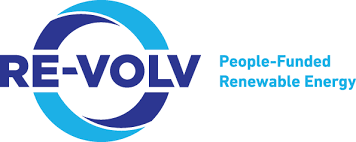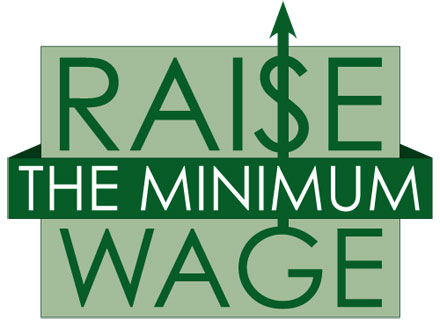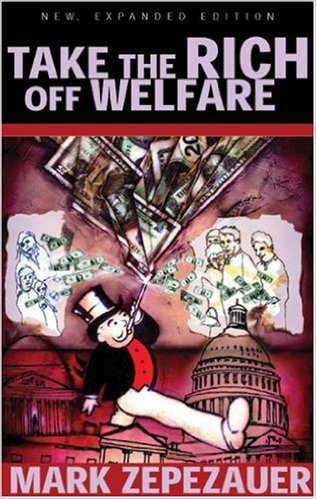Right-Wing Think Tanks and Academia
by Steve Kangas
In response to academia, wealthy conservative businessmen, like Charles and David Koch, have funded a number of far-right think tanks to establish a theoretical footing for their causes. Lacking all the checks and balances that keep academic research honest, these think tanks produce highly flawed and biased studies whose only purpose is to promote policies that favor the business classes that fund them.
Traditionally, think tanks analyze policy problems and suggest solutions. The current organizations are more properly defined as advocacy groups, or hired intellectual guns. Their sole purpose is to sell policies to the public and Congress that favor the wealthy special interests that fund them.
Think tanks are ideal for this salesmanship, because they lack many of the checks and balances that keep academia honest. Consider their differences in method:
- In academia, the peer-reviewed journal and the scientific conference are two important tools for keeping research honest. They allow scholars to confront their opponents and argue out their differences in sometimes brutal and extensive debate. No such policy exists for think tanks. Think tanks must be debated in the media, a severely limited forum (dealing in sound bites) which provides them with a great deal of intellectual cover.
- In academia, scholars have an important arbiter in the National Academy of Sciences, which comprises many of the nation’s — indeed, the world’s — most respected scientists. Think tanks, on the other hand, submit their work to the general public, who are usually unqualified to give an expert critique of the study.
- Public universities promote diversity of thought as an official policy, by rotating different-minded professors in and out of teaching assignments. There is no diversity of thought in a think tank, where researchers are hired because they already agree with the foundation’s political philosophies.
- Academics conduct their research first and draw their conclusions second — if they don’t, they’ll catch hell at peer review. But think tanks do this exactly backwards: they reach their conclusions first and conduct their research second.
- The sheer size of academia also works to keep research more accurate. There are over 3,600 higher academic institutions in the U.S., but only a few dozen think tanks. Academia therefore has a vastly larger talent pool and considerably greater research facilities than think tanks.
And these differences of method lead to startling differences of result. Consider the following examples:
- Supply-side economics. Academia has utterly rejected this crank theory. The American Economic Association is the economic arm of the National Academy of Sciences, and it is filled with scholars of all political stripes. Even so, only 12 of its 18,000 members described themselves as supply-siders in the early 80s. In American universities, there is no major department that could be called “supply-side,” and there is no supply-side economist at any major department. Such total rejection by academia has stung supply-siders. Martin Anderson, who works at the Hoover Institute, has written a bitter tirade against academia entitled Impostors in the Temple. He believes that the only good economics being conducted nowadays is by conservative think tanks, where supply-side theory thrives. This is either a damning indictment of academia or think tanks, depending on your point of view.
- The Hoover Institute and the New Jersey Family Cap. In 1993, New Jersey began denying extra welfare benefits to welfare mothers who had more kids. Conservatives were eager to show that the cap took away a financial incentive for welfare mothers to increase their family size. Sixteen months after the cap took effect, the Hoover Institute released a study showing that the average monthly birth rate for New Jersey welfare mothers had declined more than 10 percent. However, the study was so poorly done that it failed to compare a control group with an experimental group. A Rutgers study which did found that “there is not a statistically significant difference between the birth rates in the experimental and control groups.”
- The Cato Institute‘s welfare benefits study. In 1996, Cato released a report claiming that welfare benefits far exceeded the income from a minimum wage job. For example, they calculated that the typical AFDC family in California received benefits totaling $20,687 annually. In reality, the typical California welfare family of three receives less than $10,000, about $2,000 below the poverty line. To get their inflated figure, Cato had to add up every type of welfare benefit imaginable. It counted benefits that only a small percentage of welfare families can get, as if every welfare family gets them. It counted benefits that are exclusionary. It counted different benefits that only different families get. It incorrectly defined and overstated benefits. And then, to prove its point that jobs paid less than welfare, Cato committed another series of errors calculating California income, all of which were in the same direction, all of which reduced it to as little as possible.
- The Heritage Foundation and the war on poverty. In a 1994 congressional hearing, Robert Rector of the Heritage Foundation unveiled one of the most repeated sound bites of the 90s: “Since the onset of the War on Poverty, the United States has spent over $5.3 trillion on welfare. But during the same period, the official poverty rate has remained virtually unchanged.” This is totally false; the poverty rate fell from 19 to 11 percent between 1964 and 1973. And the U.S. has spent only $700 billion on AFDC and food stamps since 1962. To get his inflated $5.3 trillion figure, Rector’s “war on poverty” had to include solidly middle class programs like student loans, school lunches, job training, veterans pensions and Medicaid, three-fourths of which goes not to the poor but the elderly and disabled.
The Rector quote shows that think tanks also take advantage of sound bites. For example, they might issue a catchy one-liner, like “All families experienced real income gains during the Reagan years.” The sound bite is easy to repeat, but the rejoinder is not, because it requires a lengthy explanation concerning the business cycle, falling individual incomes, the rising percentage of wage earners in the family, the longer hours worked, the shorter vacations taken, etc. Of course, the media will only report the sound bite. And even if people are exposed to both, they will understand and remember the sound bite more easily than the detailed rebuttal.
The Conservative Donors Behind Think Tanks
Think tanks also take advantage of the financial limitations of academia. Economist Paul Krugman writes:
“Despite its centrality to political debate, economic research is a very low-budget affair. The entire annual economics budget at the National Science foundation is less than $20 million. What this means is that even a handful of wealthy cranks can support an impressive-looking array of think tanks, research institutes, foundations, and so on devoted to promoting an economic doctrine they like. (The role of a few key funders, like the Coors and Olin foundations, in building an intellectual facade for late 20th-century conservatism is a story that somebody needs to write.) The economists these institutions can attract are not exactly the best and the brightest. Supply-side troubadour Jude Wanniski has lately been reduced to employing followers of Lyndon LaRouche. But who needs brilliant, or even competent, researchers when you already know all the answers?”
The rise of far-right think tanks has been financed by wealthy conservative businessmen. Five donors especially stand out: the Lynde and Harry Bradley Foundation, the Koch Family foundations, the John M. Olin Foundation, the Scaife Family foundations and the Adolph Coors Foundation.
The foundations are also active in trying to promote conservatism in academia, donating tens of millions to promote conservative programs in the nation’s most elite universities. In fact, Charles Murray, co-author of The Bell Curve, was heavily promoted by the Bradley Foundation, which installed him as a Senior Fellow at the American Enterprise Institute. Thanks to the foundation’s support, Murray and Herrnstein were able to bypass the usual process of academic peer review and deliver The Bell Curve directly to the American public in a splendidly organized and financed media campaign. This included a Newsweek cover story that called the science behind the book “overwhelmingly mainstream.” The next year, the National Academy of Sciences denounced the scientific basis of The Bell Curve as “fraudulent.”
Unfortunately, progressive think tanks find themselves heavily outspent. According to the Center for Policy Alternatives, the major conservative think tanks in Washington had a combined budget of $45.9 million, while the major progressive think tanks had a combined budget of $10.2 million. What this means is that far-right think tanks are better able to publicize their findings, stage more conferences, lobby harder for their policies, and present more and better-packaged information before Congress.
And the far right is reaping the rewards of this blitz. A Nexus search of think tanks mentioned in newspapers, radio and TV transcripts for 1995 found that conservative think tanks were mentioned 7,792 times, compared to 6,361 for centrist ones and 1,152 for progressive ones. An even more significant measure of their success is Congress. Often, studies by conservative think tanks end up in legislation, and become reflected in official policy. Think tanks affect even the executive branch; one of the more dramatic examples of this was the Heritage Foundation’s Mandate for Leadership, which became the blueprint for the Reagan Revolution. Reagan adopted two-thirds of its proposals in his first year in office alone.
The far right’s effort to create an intellectual conservative movement is truly comprehensive, well-funded and well-organized. They are not only building think tanks at the national level, but the state level as well, since congressional conservatives are trying to devolve power to the states. They are targeting the nation’s elite universities, providing funding for conservative academic programs, conservative college newspapers, and conservative scholarships. Financially, liberals fall far behind in all these efforts.









